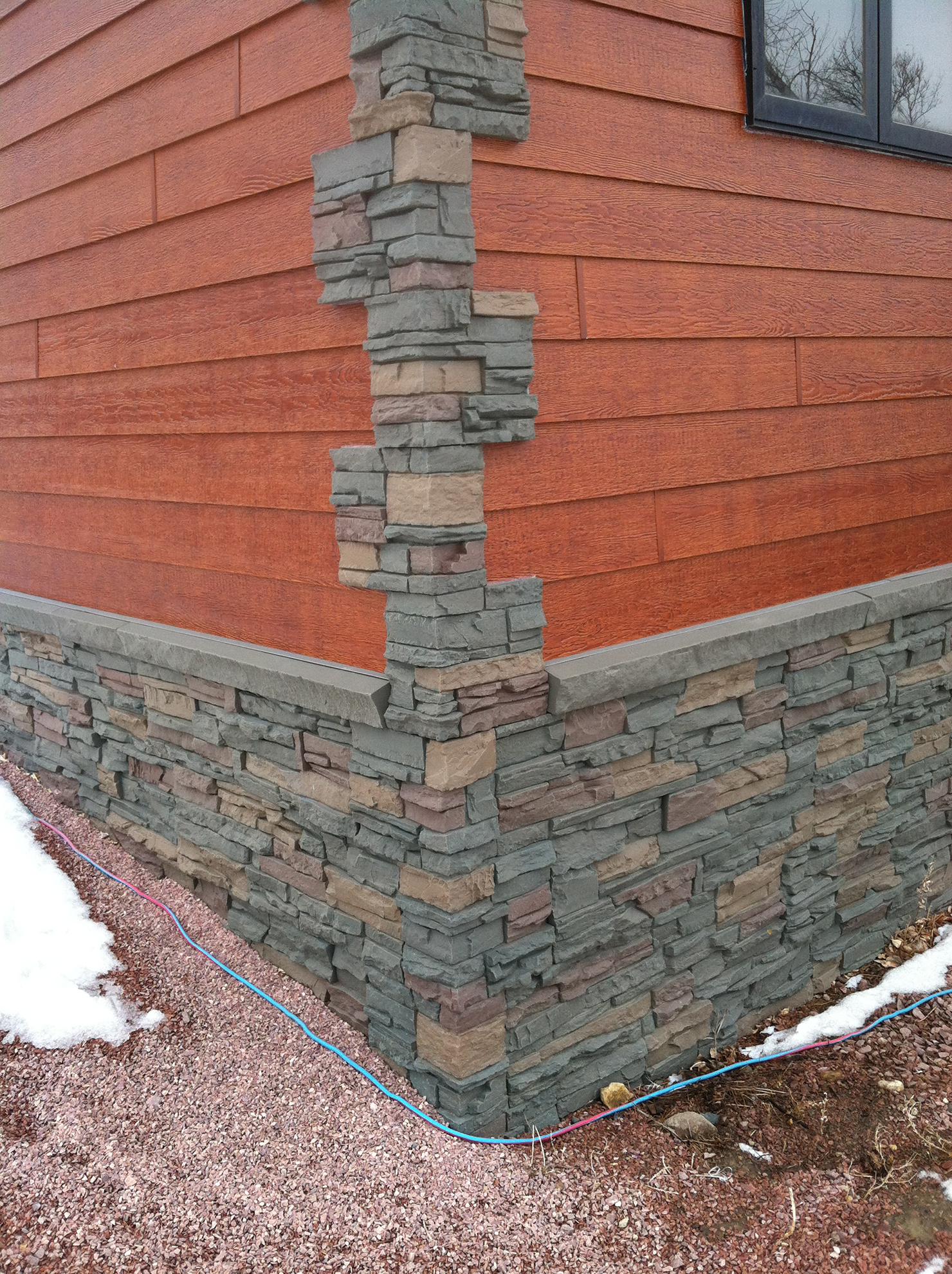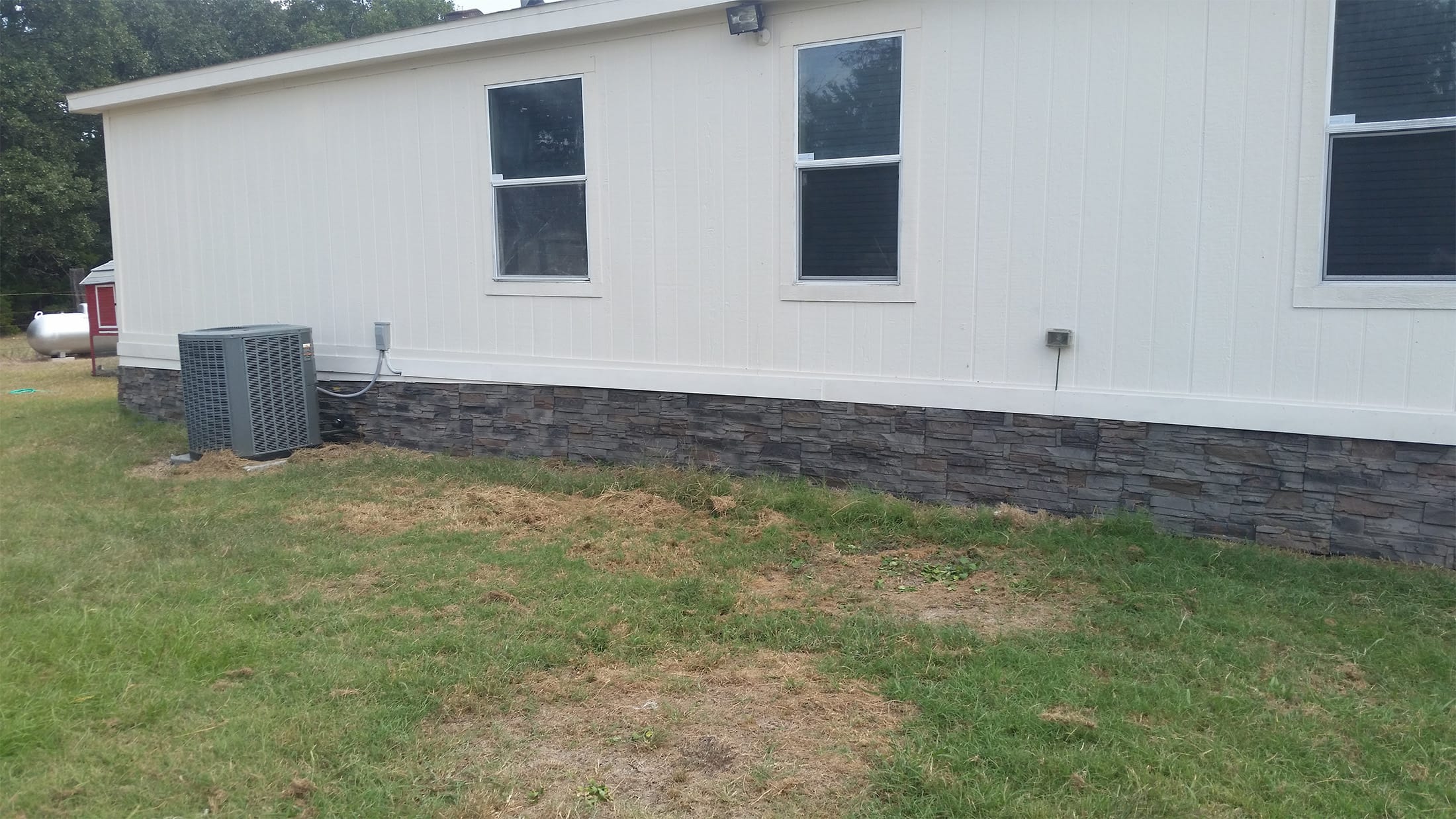Shed Skirting Ideas You Can Complete in a Weekend
Do you have a storage shed, detached garage, or utility housing that you’d like to spruce up?
Adding a coat of paint or pressure washing it will only go so far in adding flair to an otherwise drab structure. Why not add some faux stone in the form of a shed skirt? A shed skirting project can be made easy with the faux stone or brick products available from GenStone, the leading manufacturer of interior and exterior building veneers.
There is a long list of benefits to using faux stone compared with regular stone. They include:
- Faux stone is less expensive. Brick or natural stone materials are very costly, especially when the labor expenses are taken into consideration. With faux stone or faux brick paneling from GenStone, you can easily cut your costs in half (or more), and you’ll have an equally attractive, aesthetically pleasing outcome.
- Installation is easy for DIY-ers. To install a faux stone shed skirt, you don’t have to be a Master Brickmason. Some simple hand tools and a little expert instruction from the GenStone support staff are all you need to complete this project in a single weekend.
- GenStone faux stone and faux brick shed skirts are waterproof. Did you know that by adding a faux stone shed skirt, you’ll actually be improving your shed’s protection against the elements? It’s true!
For a more attractive-looking shed that fits well with other design elements of your home, a faux stone shed skirt is a fantastic idea.
Here are a few shed skirting ideas to get you started.
The One-Foot “Short Skirt”
As you may already know, GenStone faux stone panels measure 12” in height and 42” in length. This sizing makes it easy to determine how many panels you’ll need to skirt your entire shed.

Kenai Stacked Stone Panels
To install a one-foot ‘short skirt’ on your shed, you’ll want to follow these simple steps:
- Measure the length of each side of your shed, in inches, and then divide by 42. This will give you the total number of faux stone panels you’re going to need to install a one-foot shed skirt. If you wind up with a fraction or decimal, always round up to the nearest panel.
- Don’t forget the trim and ledgers! Trim and ledgers can be used either horizontally or vertically, and they’re engineered to be used with the integrated shiplap edges built into GenStone faux stone panels.
- Obtain the GenStone materials you need for your shed skirt, and then lay them down in front of the surfaces that are going to be treated. This will help you to visualize where to make your cuts and what panel transitions make the most sense for your shed’s look and feel.
- Plan for obstacles. If your shed has hose spigots, electrical boxes, or other physical surface interruptions, these are going to need to be accounted for in the cutting of your GenStone faux stone panels.
- Install the panels! Start your panel run from the most convenient corner. You’ll want to be sure to completely secure each panel to the wall with shiplap and face screws as you move along. Remember that the stone undersides are often the best locations for face screws.
After you’ve installed the exterior shed skirt, how about moving to the interior?

Interior Shed Skirt
The inside of a backyard shed or storage building doesn’t have to be boring and fashionably neglected. If you’ve gone to the effort of adding an exterior faux stone skirt to your shed, why not go for enhancing the interior, as well?
There is only one significant difference between the use of interior and exterior faux stone panels for shed skirting, and that is how the corners are treated.
For an exterior shed skirt, you’ll only need outside corner pieces of faux stone.
For an interior shed skirt, you’ll only need inside corner pieces of faux stone.
Both inside and outside faux stone panels contain the same shiplap edge accommodations that are needed to make the entire system work well together.
After you’ve added both and interior and exterior shed skirt, you’ll be able to enjoy a fresh, bold new look to your shed, whether you’re on the inside of it or on the outside!
Because of how easy it is to work with GenStone faux stone products, both an interior and and exterior shed treatment can easily be completed in a single weekend.
When you’re ready to breathe new life into your shed, it’s time to dust off those hand tools and get to work!
